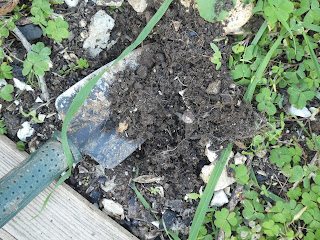6 January 2020
During the lazy days of last summer, I decided to learn a little more about good husbandry and signed up for a six module course on Organic Plant Culture (with ACS). The third module is about knowing your soil. I collected from four sample areas where we have treated beds in different ways, and analysed the findings:
During the lazy days of last summer, I decided to learn a little more about good husbandry and signed up for a six module course on Organic Plant Culture (with ACS). The third module is about knowing your soil. I collected from four sample areas where we have treated beds in different ways, and analysed the findings:
'Virgin' soil - red clay - sticky but surprisingly well draining due to the gravelly limestone pebbles throughout. Slightly acidic and poor moisture-holding capacity.
The 'Moringa' beds - much blacker and more loamy. Several years of adding a layer of composted manure with woodchip and straw as a surface mulch. Slightly acidic, but trees do well here. These beds had the highest water-holding capacity of the samples.
The 'Hugel' beds - built up over a heap of rotted and rotting tree wood four years ago, with some manure and straw surface mulch on occasion. The soil is still red and clayey, with little organic matter, but not very acidic and reasonably water-retaining. The core wood should be mostly rotted down by now, so these beds could improve this year.
The Herb Garden - a small raised bed that has had the best we could supply. Lots of kitchen waste compost, and a little compost manure when dormant. It is now rich black soil that promotes flourishing growth of rocket, parsley, kale and other salad crops. Neutral pH which is best for the majority of crops.




No comments:
Post a Comment